Allium 'Globemaster'
ORNAMENTAL ONION
Family: Liliaceae
Pronounced: AL-lee-um
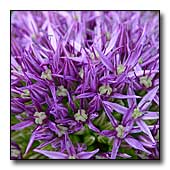
Quick Jumps
Growing Guide
Rainy Side Notes
GROWING GUIDE
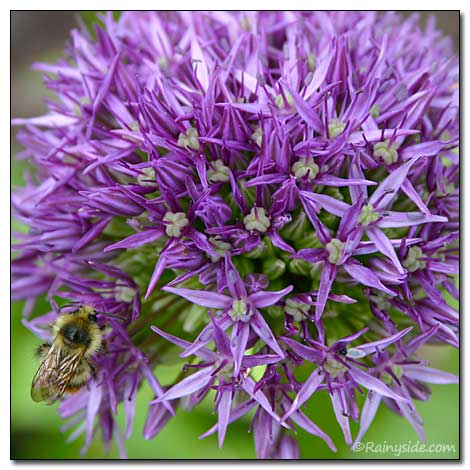
Origin:
Garden.
Plant Group:
Bulbs.
Hardiness:
Sunset zones 2-24.
USDA zones: 6-10.
Heat zones: 8-1.
Mature size:
Height: 32 inches (80 cm).
Flowering period:
May-June.
Flowering attributes:
Clusters of deep violet flowers forming a globe shape, 6-8 inches across.
Leaf attributes:
Long, strap-shaped, green leaves.
Growth habit:
Clumping.
Light:
Full sun to partial shade.
Soil:
Fertile, humus rich, well-drained soil.
Propagation Methods:
Remove offsets in autumn and plant.
Pruning Methods:
No pruning.
Pests and Diseases:
Bulb rot can occur during our damp conditions of fall through spring. Onion fly and thrips may be a problem.
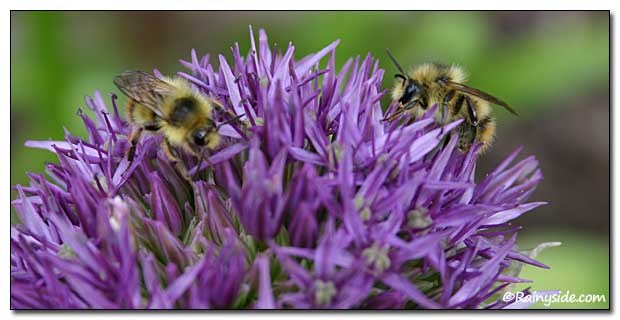
Rainy Side Notes
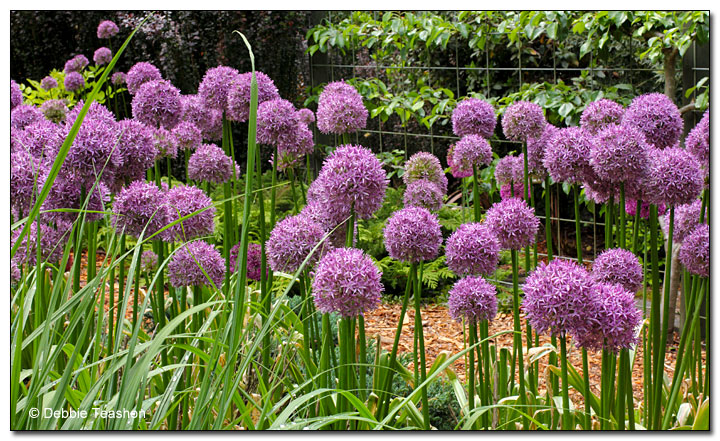
Many gardeners put colorful glass globes, even bowling balls, in the garden for additional color and interest. Why not grow globes of living violet-purple flowers, which will float color around the garden? Alliums are great for the transition period between spring and summer when the spring flowers are waning and the summer flowers are not quite in full swing.
A cross between Allium christophii and A. macleanii resulted in a truly unique and stunning cultivar, A. 'Globemaster.' The flowers, with a remarkable size of up to 8 inches across, boast a full violet-purple color that is truly a sight to behold. Even if yours may not grow to that size, they are still showstoppers in their own right. These flowers, lasting three to four weeks in the garden, are exceptional for drying, adding a touch of beauty even after blooming.
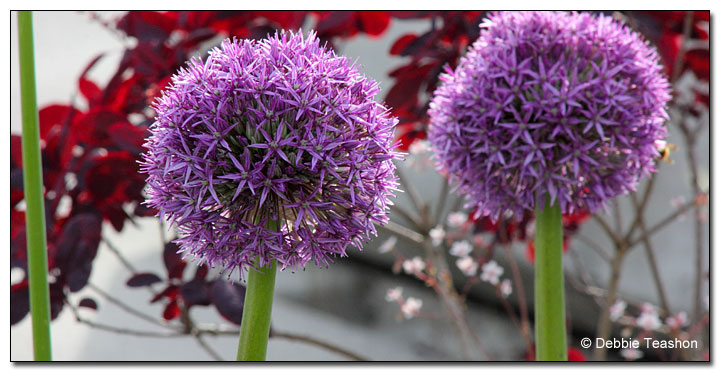
As you can see in the photos, Alliums are visually striking and excellent plants for bee foraging. The image above shows two bees sleeping when the temperature cooled. By planting Alliums in your garden, you're not just adding beauty; you're also playing a crucial role in supporting the health of our ecosystem. These flowers provide a valuable food source for essential pollinators, contributing to the balance and diversity of our natural world.
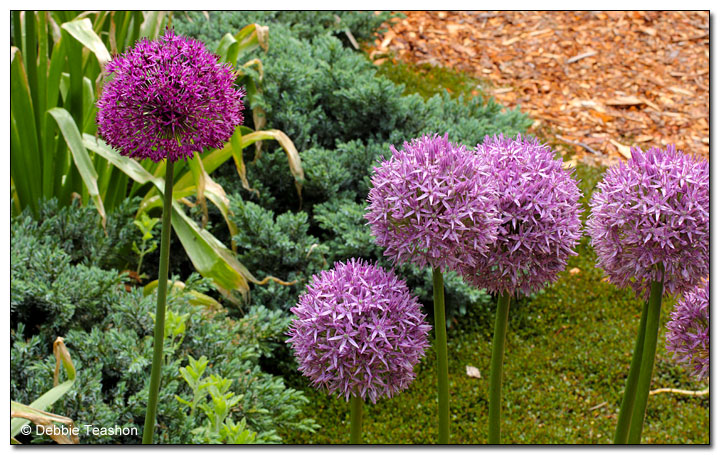
For the most significant impact, plant the bulbs in groups. As the leaves start to fade around the time the flowers are in full bloom, strategically place the plants behind others to hide the foliage. Whether in spring or fall, plant the bulbs as deep as their width and about six to eight inches apart. Here in the maritime Pacific Northwest, these bulbs are perfectly hardy. However, even if your garden suffers from wet clay-soilitis, the bulbs will grow well in raised beds above the muck. With these practical tips, you can confidently cultivate these stunning flowers in your garden.
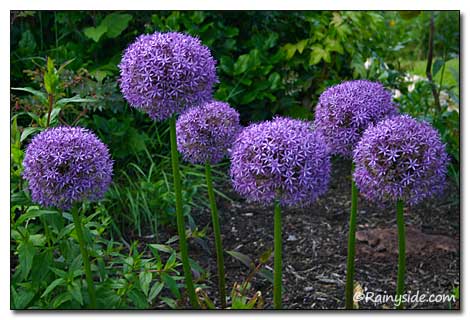

Gardening for the Homebrewer: Grow and Process Plants for Making Beer, Wine, Gruit, Cider, Perry, and More
By co-authors Debbie Teashon (Rainy Side Gardeners) and Wendy Tweton
Copyright Notice | Home | Search | Bulbs

